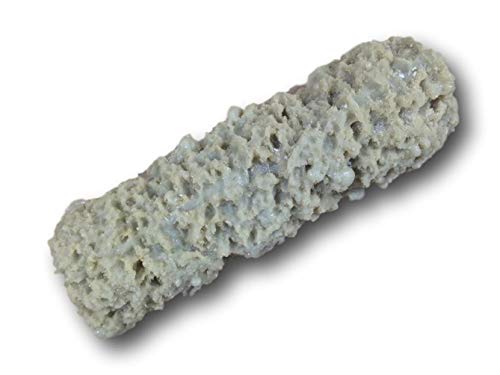https://www.medscape.com/viewarticl...1228_mscpedit&uac=88327BR&impID=1846049&faf=1
Proton Pump Inhibitors May Boost Hip Fracture Risk
By Lorraine L. Janeczko
December 27, 2018
NEW YORK (Reuters Health) - Patients taking oral proton pump inhibitors (PPIs) may be at increased risk of hip fracture, a meta-analysis of observational data suggests.
"Physicians should, therefore, exercise caution when considering a long-term PPI treatment to their patients who already have an elevated risk of hip fracture," Dr. Yu-Chuan Jack Li and colleagues at Taipei Medical University advise. "In addition, patients should be concerned about the inappropriate use of PPIs."
Dr. Li and colleagues reviewed the standard online medical databases from 1990 to 2018 for observational studies that included at least 500 adults with hip fracture who were followed for at least a year. They found 24 studies with a total of 2.1 million participants, including 319,568 with hip fracture, that met all the eligibility criteria.
As reported in Osteoporosis International, online December 12, patients treated with PPIs were at higher risk of hip fracture (risk ratio 1.20; p <0.0001).
As PPI dose increased, so did hip fracture risk: low dose RR 1.17 (p = 0.002); medium dose RR 1.28 (p <0.0001) and higher dose RR 1.30 (p <0.0001).
Compared to PPI non-users, the overall pooled risk ratio was 1.20 (p <0.0001) for patients on short-term PPI therapy and 1.24 (p <0.0001) for those taking PPIs long term.
But no increased risk of hip fracture was found in patients treated with H2 receptor agonists (H2RAs).
Strengths of the meta-analysis include its large number of studies; its detailed examination of the magnitude of the association; and its inclusion of studies from three continents.
The researchers acknowledge the limitations of their analysis, including possible confounding factors in the individual studies despite their adjusted results; the inability to determine whether the positive association is due to the effects of PPIs or to other factors such as poor health or higher age; and the reliance on medical records or claims data for diagnostic codes.
Other limitations include the heterogeneity of the studies in the main analysis of hip fracture incidence, as well as the lack of information needed to classify the studies or patients by age, gender, alcohol intake, or smoking status.
"Physicians should, therefore, exercise caution when prescribing long-term PPIs to those patients at higher risk for hip fracture, especially patients aged more than 50 years," the authors urge.
"However," they advise, "patients having Zollinger-Ellison syndrome and gastroesophageal reflux disease . . . should not discontinue this medication solely on the basis of hip fracture risk."
"Physicians should only prescribe rational PPI therapy where it is clearly indicated but always start at the lowest dose," they write, adding that providers "need to check patients' symptom and bone mineral on a timely basis."
The authors recommend randomized controlled studies to confirm or disprove their findings.
SOURCE: http://bit.ly/2rUuYOo
Osteoporosis Int 2018.
Proton Pump Inhibitors May Boost Hip Fracture Risk
By Lorraine L. Janeczko
December 27, 2018
NEW YORK (Reuters Health) - Patients taking oral proton pump inhibitors (PPIs) may be at increased risk of hip fracture, a meta-analysis of observational data suggests.
"Physicians should, therefore, exercise caution when considering a long-term PPI treatment to their patients who already have an elevated risk of hip fracture," Dr. Yu-Chuan Jack Li and colleagues at Taipei Medical University advise. "In addition, patients should be concerned about the inappropriate use of PPIs."
Dr. Li and colleagues reviewed the standard online medical databases from 1990 to 2018 for observational studies that included at least 500 adults with hip fracture who were followed for at least a year. They found 24 studies with a total of 2.1 million participants, including 319,568 with hip fracture, that met all the eligibility criteria.
As reported in Osteoporosis International, online December 12, patients treated with PPIs were at higher risk of hip fracture (risk ratio 1.20; p <0.0001).
As PPI dose increased, so did hip fracture risk: low dose RR 1.17 (p = 0.002); medium dose RR 1.28 (p <0.0001) and higher dose RR 1.30 (p <0.0001).
Compared to PPI non-users, the overall pooled risk ratio was 1.20 (p <0.0001) for patients on short-term PPI therapy and 1.24 (p <0.0001) for those taking PPIs long term.
But no increased risk of hip fracture was found in patients treated with H2 receptor agonists (H2RAs).
Strengths of the meta-analysis include its large number of studies; its detailed examination of the magnitude of the association; and its inclusion of studies from three continents.
The researchers acknowledge the limitations of their analysis, including possible confounding factors in the individual studies despite their adjusted results; the inability to determine whether the positive association is due to the effects of PPIs or to other factors such as poor health or higher age; and the reliance on medical records or claims data for diagnostic codes.
Other limitations include the heterogeneity of the studies in the main analysis of hip fracture incidence, as well as the lack of information needed to classify the studies or patients by age, gender, alcohol intake, or smoking status.
"Physicians should, therefore, exercise caution when prescribing long-term PPIs to those patients at higher risk for hip fracture, especially patients aged more than 50 years," the authors urge.
"However," they advise, "patients having Zollinger-Ellison syndrome and gastroesophageal reflux disease . . . should not discontinue this medication solely on the basis of hip fracture risk."
"Physicians should only prescribe rational PPI therapy where it is clearly indicated but always start at the lowest dose," they write, adding that providers "need to check patients' symptom and bone mineral on a timely basis."
The authors recommend randomized controlled studies to confirm or disprove their findings.
SOURCE: http://bit.ly/2rUuYOo
Osteoporosis Int 2018.












































